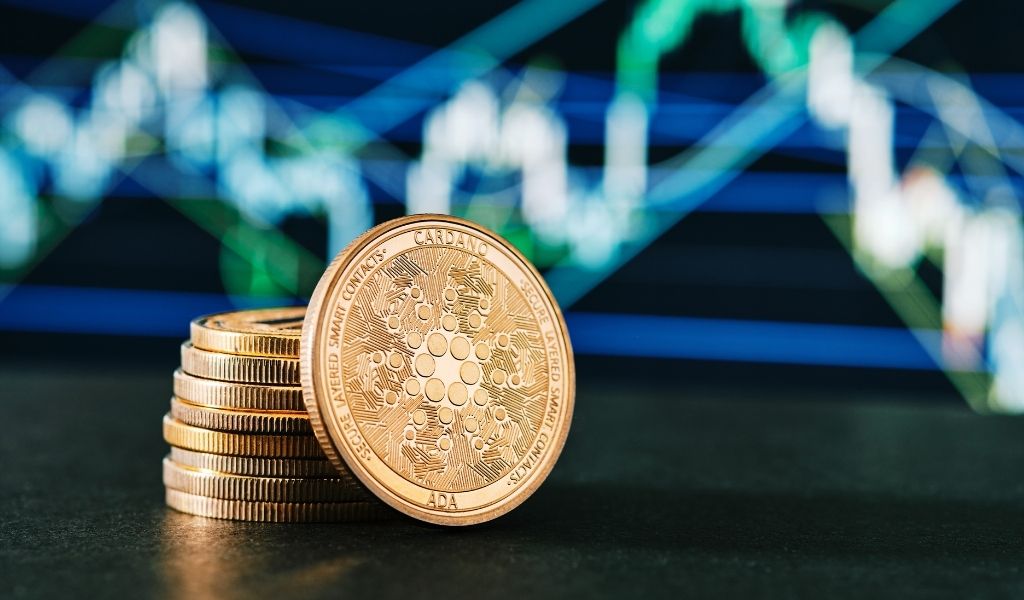Everything You Need To Know About Cardano In 2023
Cardano is a decentralized blockchain platform that aims to provide a secure and scalable infrastructure for the development of decentralized applications (dApps) and the execution of smart contracts. It was founded by Charles Hoskinson, one of the co-founders of Ethereum, and was developed by a team of engineers, scientists, and researchers from various institutions around the world.
Cardano distinguishes itself by employing a scientific and research-driven approach to blockchain technology. It is built upon a foundation of peer-reviewed research and principles of formal verification. This means that the platform’s design and features are rigorously tested and analyzed before implementation, ensuring a high level of security, reliability, and performance.
The architecture of Cardano is based on layers, with each layer serving a specific purpose. The two main layers are the Cardano Settlement Layer (CSL) and the Cardano Computation Layer (CCL). The CSL is responsible for handling transactions and the native cryptocurrency of Cardano called ADA. It ensures secure and transparent value transfer on the network. The CCL, on the other hand, is where smart contracts are executed. By separating the settlement layer from the computation layer, Cardano aims to enhance scalability and flexibility.
One of the key innovations of Cardano is its consensus algorithm called Ouroboros, which uses a proof-of-stake (PoS) mechanism. PoS allows users to participate in the network and validate transactions based on the amount of ADA they hold and are willing to “stake” or lock up as collateral. This approach is energy-efficient compared to proof-of-work (PoW) algorithms used by some other blockchains, as it doesn’t require extensive computational power.
Another significant aspect of Cardano is its focus on sustainability and interoperability. The platform incorporates a treasury system that allows stakeholders to collectively decide on the allocation of funds for the development and maintenance of the network. This ensures ongoing support and evolution of the platform. Additionally, Cardano aims to facilitate interoperability by enabling communication and interaction with other blockchain platforms and external systems.
Cardano has its own programming language called Plutus, which is used for writing smart contracts. Plutus is based on Haskell, a functional programming language known for its safety and reliability. By leveraging the properties of Haskell, Cardano aims to minimize errors and vulnerabilities in smart contracts, enhancing the overall security of the platform.
Cardano has a strong emphasis on compliance and regulatory standards. Its design allows for the integration of metadata, making it possible to attach additional information to transactions, such as KYC (Know Your Customer) details. This feature enables Cardano to meet the requirements of various industries and regulatory frameworks.
In terms of governance, Cardano implements a decentralized decision-making process through its Voltaire era. It allows ADA holders to propose and vote on protocol upgrades, funding proposals, and other important decisions. This approach ensures that the Cardano community has a voice in shaping the future of the platform.
Overall, Cardano strives to be a next-generation blockchain platform that combines scientific rigor, security, scalability, and sustainability. By addressing the limitations of existing blockchains, it aims to provide a reliable infrastructure for the development and deployment of decentralized applications and smart contracts, enabling a wide range of real-world use cases across industries such as finance, supply chain, healthcare, and more.
Also read: Most promising projects on Cardano Blockchain
Importance of Cardona for the economy
Cardano holds significant importance for the economy due to its potential to transform various sectors and provide a more inclusive and efficient financial system. Here are several key aspects highlighting the importance of Cardano for the economy:
1. Financial Inclusion: Cardano aims to provide financial services to the unbanked and underbanked populations worldwide. By leveraging blockchain technology, Cardano enables secure and low-cost transactions, allowing individuals who lack access to traditional banking services to participate in the global economy. This can help drive economic growth by providing financial inclusion to millions of people and fostering entrepreneurship and innovation in underserved regions.
2. Decentralized Finance (DeFi): Cardano’s smart contract capabilities enable the development of decentralized finance applications. DeFi platforms built on Cardano can offer a wide range of financial services such as lending, borrowing, staking, and yield farming, all without intermediaries. This can potentially disrupt traditional financial systems by making financial services more accessible, transparent, and cost-effective for individuals and businesses.
3. Enhanced Security: Cardano’s scientific approach to blockchain development emphasizes security and formal verification. By utilizing peer-reviewed research and rigorous testing methodologies, Cardano aims to minimize vulnerabilities and the risk of cyber attacks. This enhanced security can foster trust and confidence in blockchain technology, attracting more participants and investments to the ecosystem.
4. Improved Efficiency and Cost Reduction: The scalability and performance enhancements planned for Cardano, such as the implementation of the Hydra protocol, can significantly improve transaction speed and throughput. This increased efficiency can have a profound impact on various industries, including supply chain management, logistics, and cross-border payments. By streamlining processes and reducing costs associated with intermediaries and legacy systems, Cardano can enhance productivity and competitiveness, positively impacting economic growth.
5. Interoperability: Cardano’s focus on interoperability allows it to interact with other blockchain platforms and external systems seamlessly. This enables efficient data and asset transfer across different networks, facilitating cross-chain transactions and collaborations. Such interoperability can promote economic integration and create new business opportunities by enabling the exchange of value and information between different industries and ecosystems.
6. Governance and Compliance: Cardano’s governance model allows stakeholders to participate in decision-making processes, ensuring that the platform evolves according to the needs of its community. This transparent and inclusive governance framework helps create an environment where regulatory compliance can be effectively implemented. By adhering to regulatory standards, Cardano can attract institutional investors and enterprises seeking blockchain solutions, driving economic growth and mainstream adoption.
7. Sustainable Development: Cardano’s treasury system, funded by a portion of transaction fees, provides ongoing financial support for the development and maintenance of the platform. This sustainable funding model ensures continuous innovation, upgrades, and ecosystem growth. It also enables Cardano to adapt to emerging economic trends, technological advancements, and evolving user requirements, making it a resilient and long-term solution for various economic sectors.
In summary, Cardano’s potential impact on the economy lies in its ability to foster financial inclusion, provide secure and efficient financial services, enhance productivity, enable cross-chain interoperability, facilitate regulatory compliance, and promote sustainable development. By leveraging blockchain technology and innovative features, Cardano has the potential to drive economic growth, reduce barriers to entry, and empower individuals and businesses in a wide range of industries.
Also read: How Cardano Is Revolutionizing The Way We Think About Money
Top 10 Facts about Cardona
1. Cardona is a UNESCO World Heritage Site. The Cardona Salt Mines are a UNESCO World Heritage Site, recognized for their unique geological formations and their importance to the salt industry. The mines have been in operation for over 1,000 years, and they are still a major tourist attraction today.
2. Cardona is home to a medieval castle. The Cardona Castle is a medieval castle that dominates the skyline of Cardona. The castle was built in the 11th century, and it has been used as a military fortress, a royal residence, and a prison. Today, the castle is a popular tourist destination, and it offers stunning views of the surrounding countryside.
3. Cardona is a major salt producer. Cardona is a major salt producer, and the Cardona Salt Mines are one of the largest salt mines in Europe. The salt mines are located in a natural salt dome, and they have been in operation for over 1,000 years. The salt from the Cardona Salt Mines is used in a variety of products, including table salt, food flavoring, and industrial chemicals.
4. Cardona is a popular tourist destination. Cardona is a popular tourist destination, and it is known for its beautiful architecture, its rich history, and its natural beauty. The town is home to a number of historical landmarks, including the Cardona Castle, the Cardona Salt Mines, and the Canónica de Sant Vicenç de Cardona. Cardona is also surrounded by stunning countryside, which is perfect for hiking, biking, and fishing.
5. Cardona is located in the province of Barcelona, Spain. Cardona is located in the province of Barcelona, Spain. The town is about 100 kilometers northeast of Barcelona, and it is easily accessible by car or train. Cardona is also a popular stop on the Camino de Santiago, a pilgrimage route that leads to the city of Santiago de Compostela in northwestern Spain.
6. Cardona has a population of about 10,000 people. The population of Cardona is about 10,000 people. The town is a mix of Catalan and Spanish speakers, and it is a popular destination for both Spanish and foreign tourists. 
7. Cardona is a member of the Cittaslow movement. Cardona is a member of the Cittaslow movement, which is a network of towns and cities that are committed to preserving their quality of life and their traditional values. Cardona is known for its slow pace of life, its friendly people, and its beautiful surroundings.
8. Cardona is a good place to learn about the salt industry. Cardona is a good place to learn about the salt industry. The Cardona Salt Mines offer guided tours, and there is also a museum dedicated to the salt industry.
9. Cardona is a good place to go hiking and biking. Cardona is a good place to go hiking and biking. The town is surrounded by stunning countryside, and there are a number of hiking and biking trails that lead to the Cardona Salt Mines, the Cardona Castle, and other historical landmarks.
10. Cardona is a good place to relax and enjoy the scenery. Cardona is a good place to relax and enjoy the scenery. The town is surrounded by beautiful mountains, forests, and rivers. There are also a number of thermal baths in the area, which are a popular destination for people who want to relax and rejuvenate
Also read: Cardano’s Roadmap For 2023: Upgrade And New Projects
Risks associated with Cardona
While Cardano has significant potential, like any emerging technology, it also carries certain risks. It’s important to be aware of these risks before engaging with Cardano or any other blockchain platform. Here are some notable risks associated with Cardano:
1. Market Volatility: The cryptocurrency market, including Cardano’s native cryptocurrency ADA, is highly volatile. The value of ADA can fluctuate dramatically within short periods. Investors and users should be prepared for potential price volatility, which can impact the value of their holdings and investments.
2. Regulatory Uncertainty: The regulatory landscape surrounding cryptocurrencies and blockchain technology is still evolving. Governments and regulatory bodies are developing frameworks to address various aspects of digital assets, including security, taxation, and compliance. Uncertainty or unfavorable regulations could affect the adoption and operation of Cardano, impacting its potential use cases and market acceptance.
3. Smart Contract Risks: While Cardano’s design aims to minimize vulnerabilities in smart contracts through formal verification and code auditing, there is still a risk of coding errors or security flaws in the smart contracts deployed on the platform. Bugs or vulnerabilities in smart contracts can lead to financial losses or compromise the integrity of decentralized applications. Users should exercise caution and conduct thorough due diligence when interacting with smart contracts on Cardano.
4. Network Security: Although Cardano employs a proof-of-stake (PoS) consensus mechanism, which is generally considered more energy-efficient and secure than proof-of-work (PoW), no system is entirely immune to security risks. A successful attack on the Cardano network could result in disruptions, loss of funds, or manipulation of transactions. Ongoing security audits, community vigilance, and adherence to best security practices are crucial to mitigate such risks.
5. Scalability Challenges: As Cardano aims to scale and handle increased transaction volumes, it may face challenges in maintaining high throughput and network performance. Delays or inefficiencies in processing transactions could limit the platform’s adoption and usability, particularly during periods of high network congestion.
6. User Error and Phishing Attacks: Users interacting with Cardano should be cautious about phishing attempts, where malicious actors attempt to steal sensitive information by impersonating legitimate entities. It is essential to exercise caution while sharing private keys, accessing wallets, or participating in Initial Coin Offerings (ICOs) or token sales. Users should rely on trusted sources and employ secure practices to protect their funds and personal information.
7. Technological Risks: As Cardano is an evolving project, it may encounter technological challenges or unforeseen issues during its development and upgrades. These challenges could cause delays in the implementation of planned features or the achievement of milestones, impacting the perception of the project and potentially affecting its adoption and market value.
8. Competition and Market Dynamics: Cardano operates in a highly competitive environment with other blockchain platforms offering similar or complementary features. The success and adoption of Cardano may depend on its ability to differentiate itself and provide superior solutions compared to other platforms. Shifts in market dynamics or the emergence of new technologies could affect Cardano’s position and market share.
It’s important to note that this list of risks is not exhaustive, and the actual risks associated with Cardano may evolve over time. Individuals should conduct their own research, seek professional advice, and carefully assess their risk tolerance before engaging with Cardano or any other blockchain platform.
Future of Cardona
The future of Cardano holds significant potential as the project continues to evolve and implement its roadmap. Here are several aspects that highlight the potential future developments and advancements for Cardano:
1. Full Deployment of Shelley and Goguen: Cardano’s development is divided into eras, and two critical eras, Shelley and Goguen, have already been launched. The Shelley era introduced the decentralization of the network, allowing ADA holders to participate in block production and network governance. The Goguen era focuses on smart contract functionality, enabling the development and deployment of decentralized applications (dApps) on the Cardano platform. As these eras fully mature and gain wider adoption, the Cardano ecosystem is expected to grow significantly.
2. Continued Protocol Enhancements: Cardano’s roadmap includes ongoing protocol enhancements to improve scalability, interoperability, and governance. The introduction of Hydra, a layer-2 scaling solution, aims to enhance the network’s transaction throughput, making it capable of handling a significantly higher number of transactions per second. Additionally, the Voltaire era focuses on governance, allowing ADA holders to actively participate in decision-making processes and protocol upgrades. These ongoing developments will further strengthen Cardano’s capabilities and position it as a robust blockchain platform.
3. Expansion of Use Cases: With the deployment of smart contracts, Cardano is expected to witness a proliferation of dApps and an expansion of use cases across various industries. Sectors such as decentralized finance (DeFi), supply chain management, healthcare, gaming, and identity management are likely to benefit from Cardano’s secure and scalable infrastructure. The ability to create and execute reliable and transparent smart contracts on Cardano can drive innovation, cost-efficiency, and improved trust in these industries.
4. Integration of Real-World Data: Cardano aims to bridge the gap between blockchain and the real world by facilitating the integration of external data sources into smart contracts. This feature, known as oracle integration, enables smart contracts on Cardano to interact with real-world events and data, unlocking a wider range of applications and enabling automation in various domains, including insurance, logistics, and prediction markets.
5. Cross-Chain Interoperability: Cardano aims to achieve interoperability, allowing seamless communication and value transfer between different blockchain platforms. This capability can foster collaboration and data sharing among different ecosystems, opening up opportunities for cross-chain DeFi protocols, asset transfers, and enhanced connectivity with external systems. Cardano’s partnership with other blockchain projects, such as Ergo, aims to explore interoperability solutions and enable interoperability between Cardano and other networks.
6. Emphasis on Sustainability: Cardano’s treasury system, funded by a portion of transaction fees, ensures ongoing financial support for the development and maintenance of the platform. This sustainable funding model enables continuous innovation and ecosystem growth. As the treasury system evolves, the community’s ability to propose and vote on funding proposals is expected to further enhance the sustainability and long-term viability of Cardano.
7. Adoption in Emerging Markets: Cardano’s focus on financial inclusion and its potential to provide secure and cost-effective financial services make it well-suited for adoption in emerging markets. By providing access to banking services, remittances, and microfinance solutions, Cardano can empower individuals and businesses in regions where traditional financial systems are less accessible. Collaborations with governments, NGOs, and local communities can drive adoption and make a positive socio-economic impact.
8. Research and Scientific Collaborations: Cardano’s commitment to a research-driven approach positions it as a hub for collaboration with academia and scientific institutions. Ongoing research efforts, collaborations, and peer-reviewed publications contribute to the growth of the wider blockchain ecosystem, influence industry best practices, and establish Cardano as a leader in blockchain technology.
While the future of Cardano appears promising, it’s important to note that the actual outcomes and timelines for these developments are subject to various factors, including technological challenges, regulatory landscapes, market dynamics, and competition. Continued community engagement, partnerships, and advancements in technology will play a crucial role in shaping the future trajectory of Cardano.
End of 2024, approximately a year away
Some investors in #CARDANO #DEFI
That think they can play the market
Will look back and realize they sold their
WINNERS for $1, $2, $3 in 2023 while
Same asset are worth $50,$75, $100
In 2024, it would be a LIFE CHANGING
MISSED… pic.twitter.com/faN4fNrw73
— Alexander Legolas (@ShillMoBaggins) June 18, 2023
Stay informed with daily updates from Blockchain Magazine on Google News. Click here to follow us and mark as favorite: [Blockchain Magazine on Google News].
Get Blockchain Insights In Inbox
Stay ahead of the curve with expert analysis and market updates.
latest from tech
Disclaimer: Any post shared by a third-party agency are sponsored and Blockchain Magazine has no views on any such posts. The views and opinions expressed in this post are those of the clients and do not necessarily reflect the official policy or position of Blockchain Magazine. The information provided in this post is for informational purposes only and should not be considered as financial, investment, or professional advice. Blockchain Magazine does not endorse or promote any specific products, services, or companies mentioned in this posts. Readers are encouraged to conduct their own research and consult with a qualified professional before making any financial decisions. The featured image used is just a creative depiction of the title and it does not intend to hurt sentiments of any person or institution. If it hurts anyone sentiments, please do not hesitate to reach out to Blockchain Magazine.

 Bitcoin
Bitcoin  Ethereum
Ethereum  XRP
XRP  Tether
Tether  Solana
Solana  Dogecoin
Dogecoin  USDC
USDC  Cardano
Cardano  Lido Staked Ether
Lido Staked Ether  TRON
TRON  Chainlink
Chainlink  Avalanche
Avalanche  Wrapped stETH
Wrapped stETH  Wrapped Bitcoin
Wrapped Bitcoin  Sui
Sui  Toncoin
Toncoin  Stellar
Stellar  Hedera
Hedera  Shiba Inu
Shiba Inu  WETH
WETH  Polkadot
Polkadot  LEO Token
LEO Token  Litecoin
Litecoin  Bitcoin Cash
Bitcoin Cash  Bitget Token
Bitget Token  Hyperliquid
Hyperliquid  Official Trump
Official Trump  Uniswap
Uniswap  USDS
USDS  Wrapped eETH
Wrapped eETH  Pepe
Pepe  NEAR Protocol
NEAR Protocol  Ethena USDe
Ethena USDe  Aave
Aave  Aptos
Aptos  Internet Computer
Internet Computer  Monero
Monero  WhiteBIT Coin
WhiteBIT Coin  Ethereum Classic
Ethereum Classic  Ondo
Ondo  Cronos
Cronos  POL (ex-MATIC)
POL (ex-MATIC)  Mantle
Mantle  Render
Render  Dai
Dai  MANTRA
MANTRA  Algorand
Algorand 









